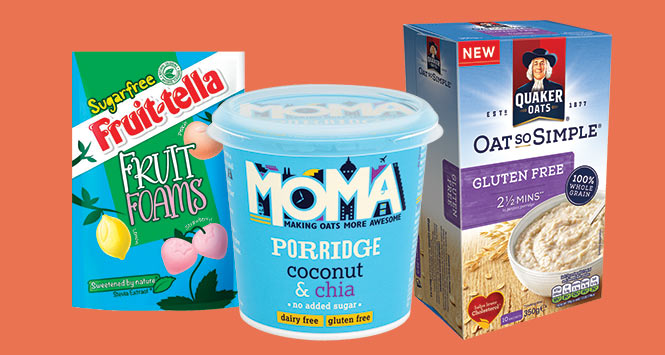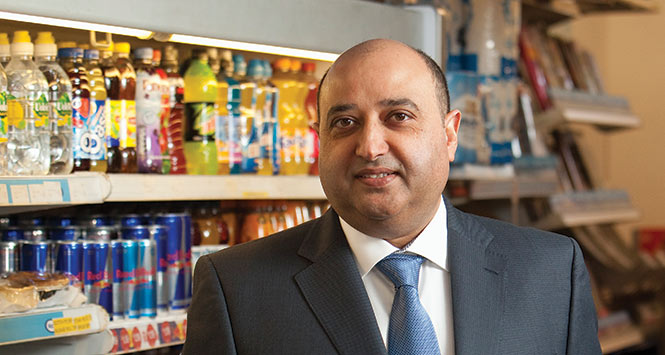With interest in free-from foods and high quality, healthier local produce spiking, an opportunity exists for convenience stores to satisfy premium demand.
by Simon Walton
Trends in healthy eating have spurred a sharp rise in consumer demand for fresh produce and ‘free-from’ lines. What was once a purchase of necessity is now increasingly the diet of choice for shoppers, keen to maintain and improve their well-being, often with an ethical angle thrown in. With those shoppers also likely to support local businesses, there’s an incentive to cater for this premium market.
According to analysts Mintel, around a third of British consumers are consciously purchasing free-from foods in any six-month period. “The ‘health halo’ of free-from foods is a key driver of uptake and has resulted in a much larger group of users than the limited number of actual or suspected allergy or intolerance sufferers,” said Kiti Soininen, Head of UK Food, Drink & Foodservice Research at Mintel, in support of data published last year. “The importance of health in driving uptake also means that companies need to ensure that nutrition profiles are best in class.”
Free-from has become a generic term for food and drink that has been designed to exclude one or more ingredients to which at least some consumers can have either an allergy or an intolerance. Typically, this might refer to gluten present in wheat, or to dairy products in general. It’s also a term increasingly used to describe vegetarian and vegan choices, sugar- and salt-free variants, and diets based on ethnic and religious observance. There’s also a growing body of opinion that, far from medical allergies and intolerances, consuming foods with alternative base ingredients can be a healthier lifestyle choice.
Growing market
However it is defined, the category is now big business. In further research by Mintel, quoted by Quaker Oats in support of its recent launch of two gluten-free variants, the UK ‘free-from’ market is currently worth £470m and is predicted to grow by 43% between now and 2020. The manufacturer says that is down to consumers increasingly looking to lead a healthier lifestyle. It goes on to note that gluten-free products are specifically aimed at those who suffer from coeliac disease, noted by NHS sources as “a common digestive condition where a person has an adverse reaction to that combination of proteins”.
Although many consumers prefer to reduce the amount of gluten in their diets as part of a lifestyle choice, there persists a perception that free-from foods may even be a medical necessity. Taking his own product as an example, Jeremy Gibson, who is Marketing Director for Nutrition at Quaker Oats, says the market is currently worth £4.2m, up 20% year on year, since 2015, demonstrating that it presents a growing opportunity for retailers.
While obviously commercially driven, Gibson says that the company is consistently seeking ways to better meet consumer needs. “Leading a gluten-free lifestyle is important and necessary for some people and so Quaker has created two gluten-free options to meet consumer demand. Gluten is a protein which occurs naturally in wheat, rye and barley. Although oats are naturally gluten-free, they may come into contact with grains containing gluten during farming, storage or transportation. Quaker Oats has introduced a breakthrough process, believed to be unique to the industry, to sort and clean the oats, ensuring they cannot be contaminated with gluten.”
The business case stacks up, when taking into account that the trend for alternative base ingredients leads to generally more expensive products. It’s something of a myth that free-from shoppers are less price conscious than average consumers. There is survey evidence to show that over half of free-from consumers complain that price differentials between free-from and non-specific equivalents are too wide. There may be a number of reasons for that – most obviously market size and greater competitiveness in the general marketplace, but there is clearly an opportunity for retailers to do better business with potentially higher margins available. If the biggest drawback of adopting a free-from diet is additional cost, then the situation can only improve for consumers as the market continues to grow, putting more attractively-priced products on the shelves at wholesalers and, ultimately, in local retail stores.
Healthier options
“Healthy living options are always something that we endorse,” said John Lee of the Scottish Grocers Federation. “The Healthy Living Programme that the SGF runs is very much a champion of the category, and also goes a long way towards addressing price and choice issues. It’s true that local retailers do have an opportunity to better know their own customers, so by exploiting that knowledge of local needs, they can provide a range that comprehensively meets the needs of their regular customers, while maintaining good stock control and margins.”
Consumers who choose specific dietary requirements typically spend £2,000 a year more on groceries than those who don’t. That figure comes from a recent nationwide survey of over 2,000 consumers, conducted by discount agency VoucherCodesPro. It found that vegan, vegetarian, gluten-free and halal diets cost consumers, on average, an estimated £162 per month extra. The company’s George Charles said there were valid reasons for the premium spend, particularly on so-called health products. “Different machines or ingredients will likely be required in order to make these products and these could well cost more than the standard fare.”
While there is room to debate the figures, there is general anecdotal evidence that free-from is not the bargain-basement choice. However, that doesn’t seem to be deterring the market. Further independent research shows the year on year growth in free-from products to be in the region of 15% or more, and that predictions for the trend remain optimistic. “As more and more of us take up selective diets, from low-carb to gluten-free,” said George Charles, “we may see the prices drop as it becomes cheaper to bulk produce these items, but if the food costs the manufacturer more it will also cost the consumer more, too.”
Space challenge
Dedicating more shelf space to speciality products may not appeal to local retailers with limited space and rigid planograms but the category is growing in importance, and worth a new look. “To some, free-from may still have the air of an ‘alternative’ or niche category but it’s now nearly 40% bigger than that signature staple of British consumption, tea,” said Mike Watkins, Head of Retailer and Business Insight at consumer insight researchers Nielsen. “The nation is increasingly concerned about diet and health. Over four in 10 Britons now actively avoid certain ingredients in what they eat and drink, which is reflected in fresh fruit and free-from being the fastest-growing categories.”
To date, the trend for free-from has not generally touched the local retail market to the same extent as supermarkets and specialist stores, but that could be about to change. “While research has been mainly carried out in the multiples,” said John Lee of the SGF, “it’s an encouraging area of growth and one that local retailers should certainly consider.”







